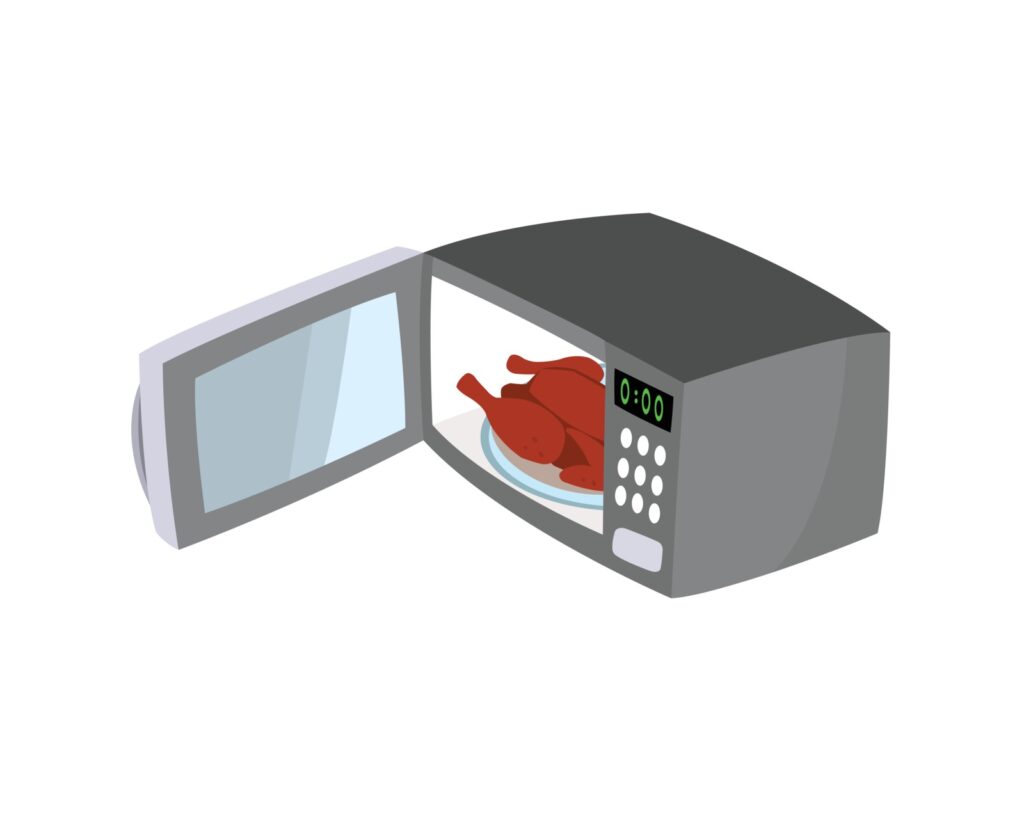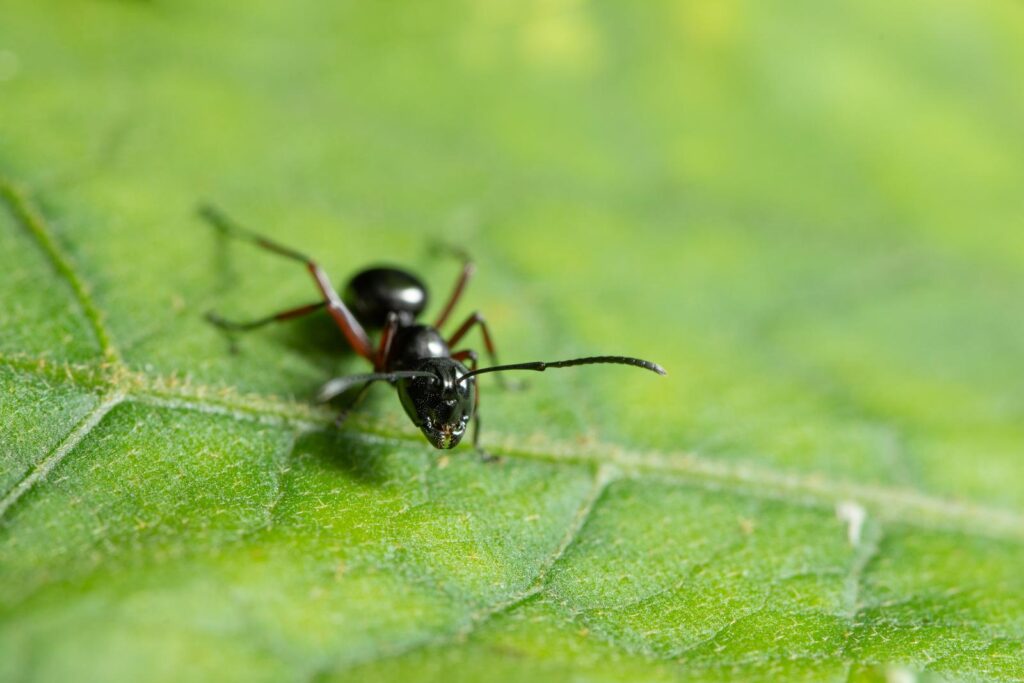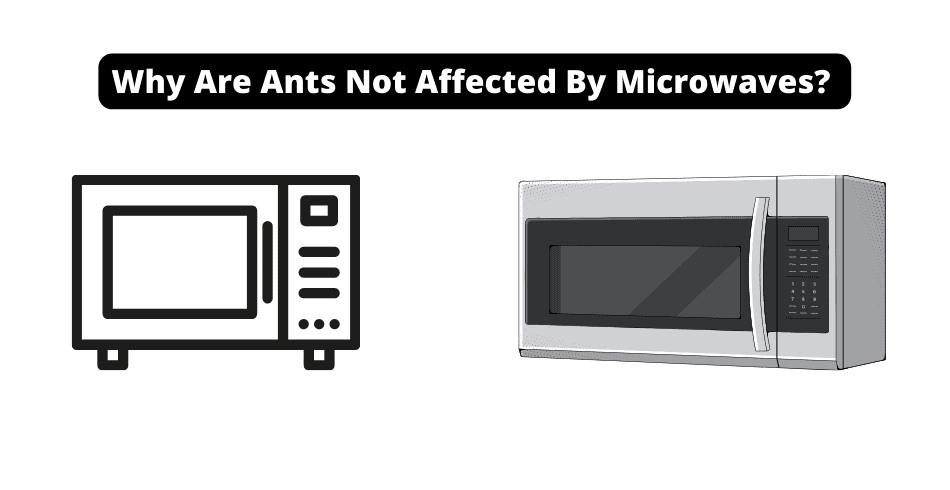I mean, we know the obvious,
We put food in the microwave oven and turn it on to heat it, which is the conventional way we warm edibles and other stuff with microwaves.
So it’s pretty logical to conclude that turning on the microwave with ants inside should kill the ants.
Right?
Well… Kinda
In some circumstances, these insects survive even if you run the microwave for many minutes with ants inside. However, sometimes with the right setup, when turning on the microwave with ants inside will kill the ants.
So, what’s the trick?
The ants will live or die inside the central microwave compartment depending on several things.
The first factor depends on the type of technology the microwaves use.
The second will depend on whether there’s a heatable item in the microwave during the heating session.
Finally, the anatomy of the ant also determines if the ant will live or die.
So how come ants in a microwave survive in certain circumstances and don’t in others? Same gadget but different results!
How is that possible?
Come with me to understand the science!

How do microwaves work?
To understand how ants survive in microwaves unscathed, let’s first look at how microwaves work.
The machine emits microwaves responsible for heating items, and these waves travel at a particular frequency after being discharged by the emitting component, the magnetron.
The wavelength of the microwave is quite large, with a frequency of 2.45 GHz.
The magnetron component that produces the waves responsible for heating is fixed at one position inside the machine, and it does not move or rotate and radiates a standing wave.
The radiation follows a constant path, hitting the interior walls of the microwave and bouncing off to other walls.

So, the object inside the microwave has to keep rotating so that different parts get exposed to the wave, and the turntable ensures rotation.
If the waves land on objects like food or water, they cause the food atoms to vibrate.
Radio waves are also easily absorbed by water molecules and fats.
The alternating nature of the electric fields triggers the water or fat molecules to start rotating.
The rotation of atoms in the object or the food being heated gets converted into energy that dissipates in the form of heat.
Metal surfaces within the microwave ordinarily reflect the powerful microwaves, and their molecules do not attain atomic motion like food and thus do not get hot.
Because of the metal’s radiation resistance, you cannot use metallic containers to warm food.
On the other hand, glass and some plastics designed for microwave use allow the radiation to penetrate the food unobstructed.
What helps ants survive in a microwave?
With that simplified explanation of how a microwave works, let’s see why ants can survive in a microwave.
Ants and insects with tiny body surface areas survive inside the microwave because, you guessed it right, their slim bodies. The ant size is smaller than the wavelength of the microwaves so that the beam won’t microwave the ants.
Further, the small size provides additional advantages.
Ants contain too little water.

Even if they come into contact with radiation during their movement inside this kitchen appliance, their water content is too little to turn to heat due to the atomic motion caused by electromagnetic waves.
Additionally, the ant’s exoskeleton prevents proper penetration of the waves into the ant’s body.
The technology working in the appliance also works in favor of the ants.
The metal surfaces reflect the beam and thus do not get hot.
That way, the ants crawl around unharmed.
Again, ants will not die in the microwave because they keep walking inside the equipment, avoiding hotspots created by wavelengths of these waves.
Walking increases survival chances because they avoid contact with the radio waves.
Even when they come into contact with the radiation, the probability of heating up is low.
Ants have a large surface area to body size, and any heat build-up is quickly dissipated because of the body size-to-surface area advantage.
When won’t ants survive the microwave?
Changing the microwave’s interior environment alters how ants interact with the conditions inside the machine.
The metal surfaces of a microwave do not get hot irrespective of how long you run the empty microwave.
However, introducing an object inside the appliance whose molecules interact with the microwaves’ turning the energy to heat, alters the dynamics.
For instance, heating an object or food with ants inside the machine increases the food’s temperature and the gadget’s interior.
The ants on or inside an item that turns the waves into heat energy will be affected by the object’s heat and not the radiation.
That way, as the thing gets hotter, the object’s or food’s rising temperature and that inside the gadget will quickly nuke the ant.

However, the ants on the metal walls or corners and not on the item being warmed will survive.
Can ants live in a microwave?
Ants can easily live in a microwave if the conditions are conducive; however, they usually aren’t.
Meaning they usually invade the gadget to collect food residue.
The ordinary conditions of your food heating machine are not very friendly for the ant to live in, even if it has food debris.
The microwave surfaces and interior are too cold.
Ants hate cold environments like those of a refrigerator since they’re unideal for a queen to set up a colony.
The locations we set up these gadgets are far from water sources, and the lack of water inconveniences the ant.
Ants prefer safe nesting conditions.
Microwaves vibrate when in use which is a disturbance to the ants.
Usually, ants would choose quiet, uninterrupted conditions to thrive.

Also, due to the availability of food, these food-warming gadgets are frequented by cockroaches.
Ants and these bugs co-exist peacefully, but their presence would cause disturbance to the queen and the larvae.
All these factors make living inside the microwave unconducive for the ant.
Will ants die as the microwave warms food?
Ants don’t die by simply being in a microwave. Several conditions contribute to this outcome. First, the ants’ size is much smaller than the wave’s frequency, and the waves are large. Since they’re larger than the ants, they won’t harm these insects. So the ant won’t get nuked.
Microwaves trigger water and fat atoms in food to rotate—the molecule rotation converts into heat energy.
Ants have too little water for atom rotation to occur. Thus, they easily survive.
The ant’s skin has some tolerance and resistance to radio waves, preventing the radiation from penetrating the body.
The heating mechanism of the microwave gadget also works in the ants’ favor.
The metal materials are wave-reflective, and the ants casually walk around unscathed without a heatable object inside the machine’s compartment.
However, if the ants are on a hot object, they get killed by the heat from the object but not the beams themselves.
Interestingly, microwaves have plenty of food particles and waste. But ants won’t make nests in these devices because the general conditions are not friendly.
These gadgets are cold, and regular use disturbs the ants too.
So, ants will forage for food in the microwave but will not live in it.
Always keep your machine clean to get rid of ants.
